Generations of American teens have taken the SAT, a blood-pressure-raising multi-hour exam they are told could make or break their academic futures.
The longest-enduring standardized college admissions test in the nation, the SAT has faced decades of controversy over bias and criticism for reducing aspiring college students to a test score. It has also been denounced as part of the high barrier to entry into the so-called American meritocracy.
During the COVID-19 pandemic, when dozens of the most prestigious universities in the nation suspended their standardized testing requirement, some were hopeful of a new era of more equitable college admissions.
But this year, many of these institutions have done an about-face on their test-optional policies. At the same time, at least 1,825 US colleges and universities, or more than 80% of four-year schools, will still not require testing for 2025 admissions, according to FairTest, the National Center for Fair & Open Testing.
The splintering of admissions policies post-pandemic has reinvigorated debate around the necessity of the SAT.
Criticism has dogged the SAT for years. The exam, whose acronym originally stood for “Scholastic Aptitude Test,” was developed in the 1920s by Princeton-based eugenicist Carl Brigham, who believed immigration was diluting American intelligence and adapted US Army mental tests to determine whether similar exams could measure innate student intelligence. (Brigham retracted some of his views several years later.)
The College Board, the educational non-profit that designs and administers the exam, told CNN the SAT has been “completely overhauled” since the 1920s and now measures how well a student has learned specific content, not inherent aptitude.
But the test’s legacy — one steeped in racism and classism — has raised questions about the need for high-stakes testing at all. The National Education Association has noted that the SAT, and its counterpart the ACT, can factor too heavily in the college admissions process.
“It’s important that we don’t overly rely on them because they’re not holistic. They are one snapshot on one day and it can determine whether or not you get into college,” NEA’s Director of Policy Daaiyah Bilal-Threats told CNN.
Most colleges have no plans to reinstitute their pre-pandemic testing requirements.
“Test-optional policies continue to dominate at national universities, state flagships, and selective liberal arts colleges because they typically result in more applicants, academically stronger applicants and more diversity,” said FairTest Executive Director Harry Feder in a February statement, after some Ivy League schools announced they would reinstitute their testing requirements.
A strong emphasis on high SAT scores has also spurred the rise of a lucrative test prep industry in the United States, which is estimated to grow by about 7% to almost $50 billion by 2027, according to a report in October 2023 from market researcher Technavio.
Discrepancies with standardized testing appear to be symptomatic of the inequality endemic to the education system. Some experts point out that doing away with the SAT as an admissions component, like many universities did at the height of the Covid-19 pandemic in 2020, does little to remedy systemic inequity. In fact, it can bring the disparity into starker focus.
Wealthier students may have access to prestigious internships, schools with better-funded clubs and sports, as well as music and arts programs — all elements of the quintessential college application.
“(Students from lower socioeconomic backgrounds) don’t have any of these fancy extracurriculars. They haven’t played in a fancy jazz band. They don’t do fancy internships. They don’t work as volunteers in Guatemala. And yet some of them will be very capable students,” said Daniel Koretz, a testing policy expert at Harvard’s Graduate School of Education. He says the question is: How do schools find these students?
According to Koretz, the SAT’s longevity can be attributed to its efficacy in predicting how a student will perform in college.
A study published in January by Harvard’s Opportunity Insights center found that standardized tests are more effective predictors of performance than high school grades.
Critically, the study also found that students from different socioeconomic backgrounds who have similar test scores have “virtually identical” college GPAs.
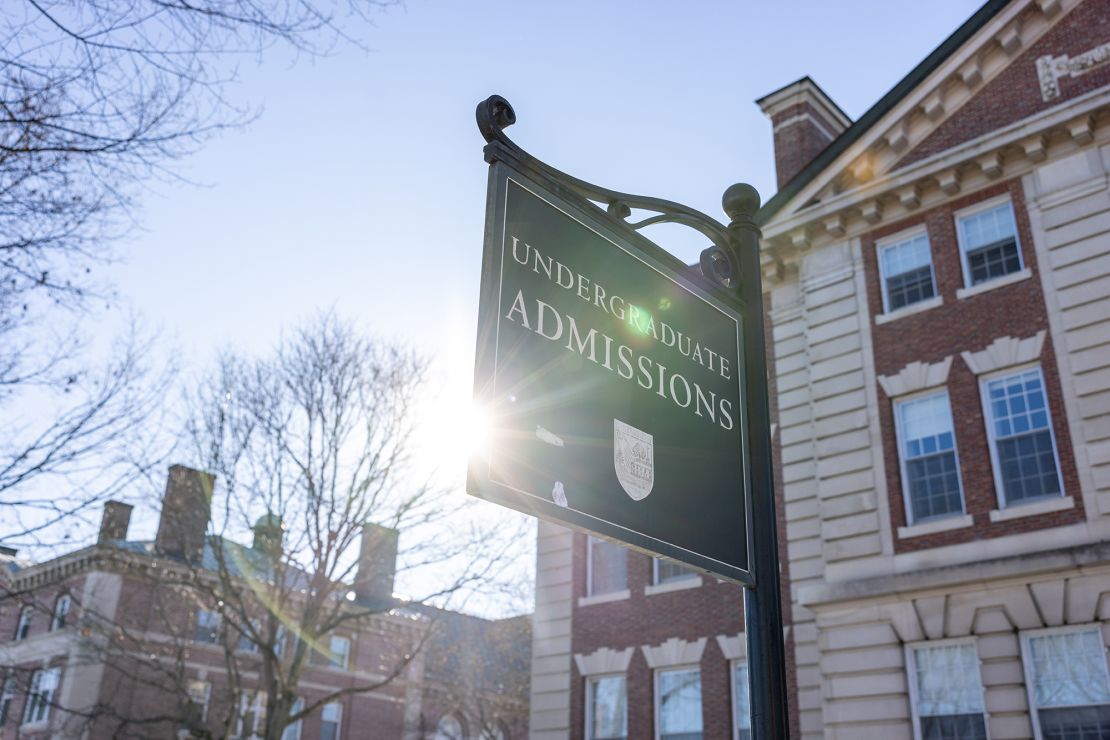
Weeks after the study was released, several schools that had been test-optional for nearly four years officially reversed their stances. Yale and Dartmouth announced in February they were reinstating a testing requirement and were quickly joined by private and public institutions, including Brown, Georgetown, Harvard, the University of Florida and the University of Texas at Austin.
“SAT/ACTs can be especially helpful in identifying students from less-resourced backgrounds who would succeed at Dartmouth but might otherwise be missed in a test-optional environment,” Dartmouth wrote in a statement in February.
“With an abundance of high school GPAs surrounding 4.0 … an SAT or ACT score is a proven differentiator that is in each student’s and the University’s best interest,” UT Austin said in March.
Still a need for standardized tests
Education experts who spoke to CNN say the SAT is necessary because there is no “standard” American education.
Individual schools may have different grading criteria. Some schools weigh grade point averages differently. An A+ in an AP class in one district is equivalent to a 4.0 GPA. In another, it could be 5.0, 4.5 or 4.2.
Even within the same school and subject, some teachers might grade more or less leniently than others.
College admissions officers simply don’t have the ability to account for all of these minute discrepancies, experts told CNN, so standardized tests will likely stick around unless US education becomes standardized in other ways.
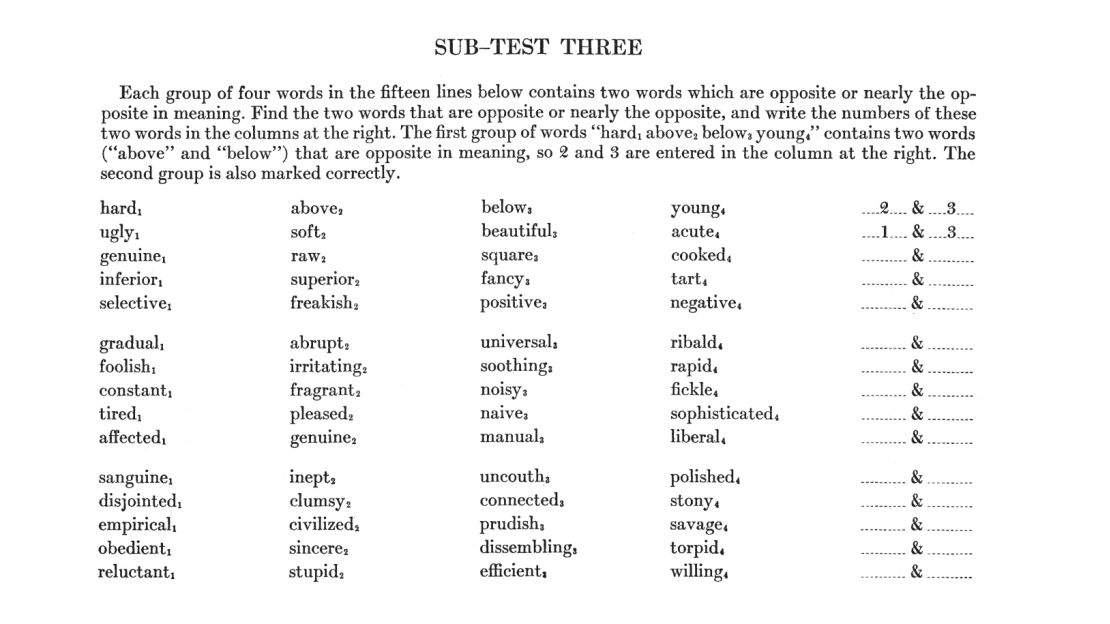
“Anytime you have a system as big as ours and in the absence of that kind of standardization in the K-12 system, schools are going to find value in finding ways to compare students. It doesn’t have to be the SAT necessarily, but something standardized like it,” said Ethan Hutt, a professor at the University of North Carolina at Chapel Hill’s School of Education.
This lack of standardization reaches back to the early days of US education. Throughout the 1800’s, there was little tracking of student achievement, and grades and written tests weren’t common.
“In the 19th century, schools … would gather parents and townspeople, and the teacher would basically put on an exhibition with the class,” said Hutt. “They would ask students questions and to recite things (they had learned).”
Oral examinations were the norm until 1845, when education reformer and then-Secretary of the Massachusetts Board of Education Horace Mann instituted a written test to gauge the level of student instruction across Boston-area public schools.
A college education was exceedingly rare, as the system was designed to favor wealthy White men funneled from elite private schools in the Northeast to prestigious private universities also in the Northeast.
“Often, it would consist of either colleges accrediting certain high schools and saying, ‘OK, any graduate of (Phillips Exeter Academy) is automatically given entrance to Harvard,’ or they would send out professors to do exams at individual schools,” said Hutt.
First administered in 1926, the SAT was an attempt to broaden the university candidate pool.
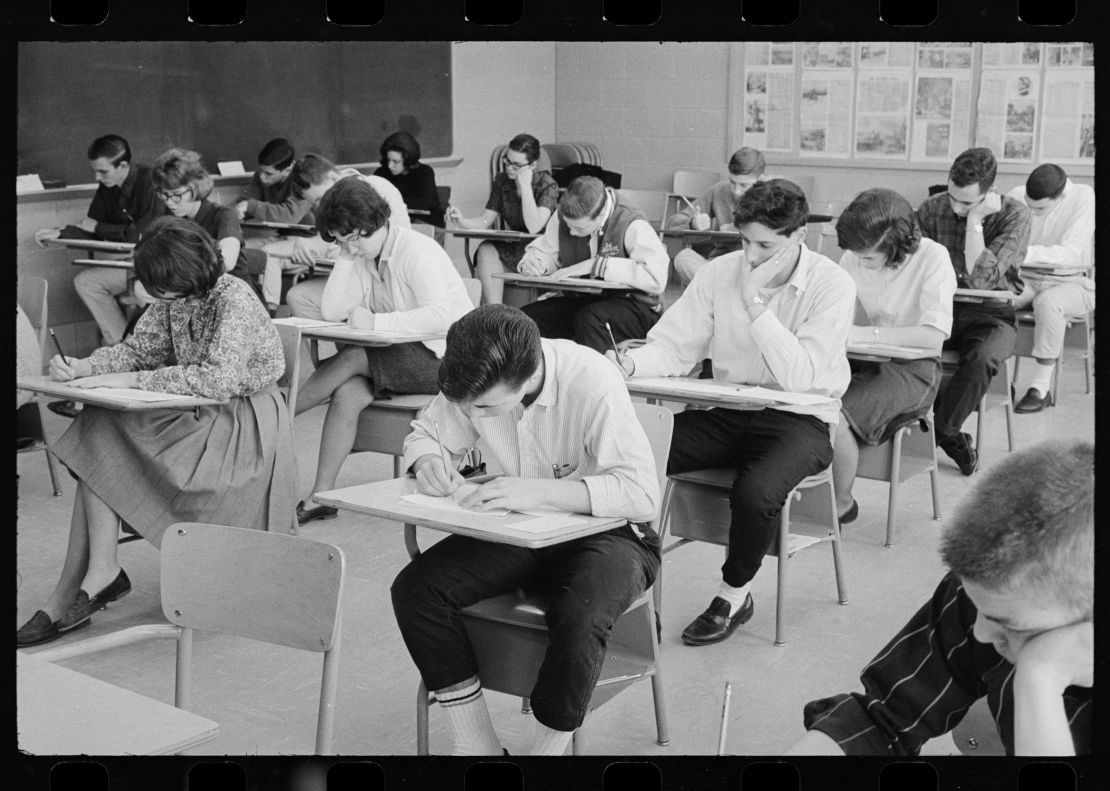
Three legislative milestones indirectly expanded the influence of the SAT. First, the 1944 Servicemen’s Readjustment Act, commonly known as the GI Bill, gave returning soldiers the funds to pursue higher education. Between 1944 and 1951, more than two million veterans enrolled in college.
Second, the 1964 Civil Rights Act prohibited colleges and universities that received federal money from discriminating against applicants according to “race, color, or national origin.” Eight years later, Congress would pass another landmark legislation — Title IX — a law that prohibited institutions from discriminating on the basis of sex. These laws, at least in theory, sought to even out the playing field for college admissions.
Between 1945 and 1995, the percent of Americans older than 25 who had earned a bachelor’s degree had increased from about 5% to 23%, according to the Census Bureau. And as higher education grew more attainable, the SAT became the most important exam some Americans would ever take.
A standard in flux
The College Board continually revamps and redesigns both its SAT scoring metrics and exam content. For decades, the test consisted of two multiple-choice sections: math and verbal reasoning. Each section was worth a total of 800 points, making a perfect score 1600.
In 2005, the College Board added an 800-point writing section to the exam alongside its math and verbal reasoning sections. The test, scored out of 2400 instead of 1600, was also 45 minutes longer. About nine years later, the SAT reverted to a 1600-point essay-optional model before entirely scrapping the essay section in 2021.
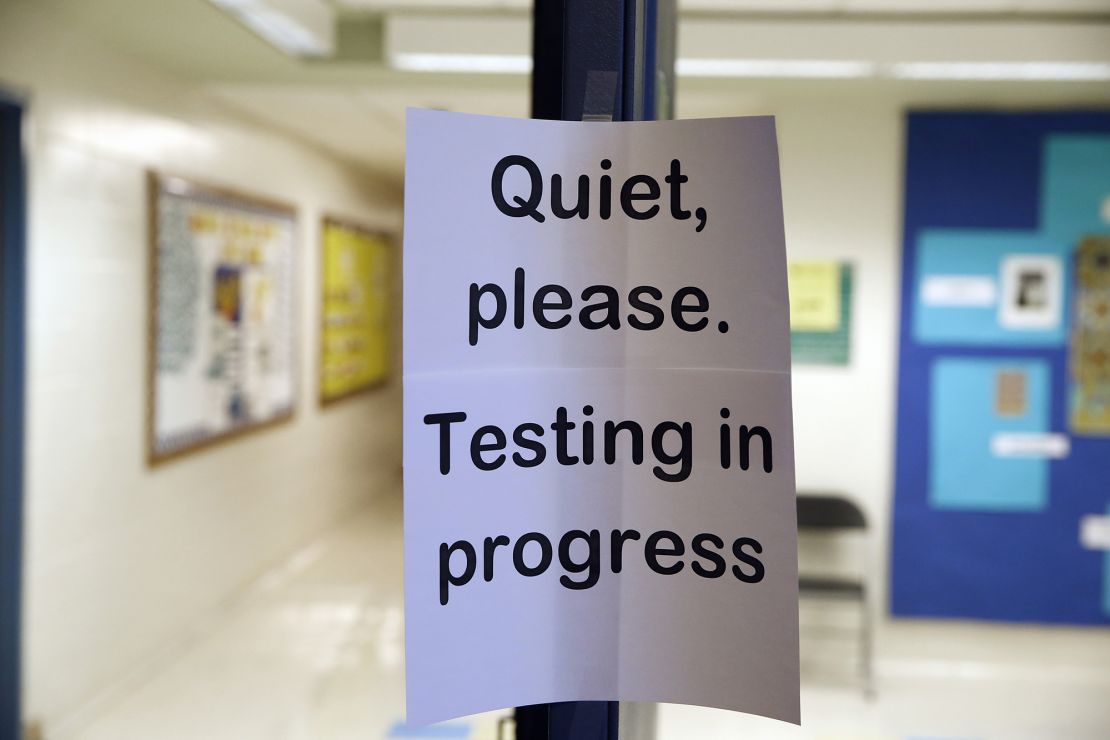
On March 9, the College Board administered its first fully digital SAT exam. At around two hours, the test, which was taken by over 200,000 students on a test-taking app, is much shorter than its predecessors. It’s also adaptive, meaning the questions in the second half of the reading and math sections are adjusted based on the student’s performance on the first half.
Part of the push to redesign comes from competition with the Iowa-based ACT, which has been administered since 1959 but has since become the preferred exam in many parts of the country.
“When the ACT started getting so much more traction and because it was shorter, the SAT really wanted to maintain its market share, and so it made a number of changes for that reason,” said Rachel Rubin, a higher education policy expert and co-founder of Massachusetts-based educational consulting company Spark Admissions.
Although the SAT has seen a slight slump in the number of test takers, with 1.9 million students sitting for the exam in 2023 compared to 2.2 million pre-pandemic, the College Board’s exam still reins supreme. Only about 1.4 million students took the ACT in 2023, compared to 1.7 million in 2019.
The SAT’s analogy section, a fixture of the exam until 2005, had long been criticized for presupposing that test-takers come from certain cultural backgrounds. An infamous example from the 1980s exam included “regatta,” which is a sporting event consisting of boat races that is almost exclusively common in wealthy Northeast communities.
“For many years the SAT … was crafted by people who were almost entirely White, were overwhelmingly male, and were largely educated in colleges and universities from the Northeast,” said Jack Schneider, the head of UMass Amherst’s Center for Education Policy. “The assumptions that they made about the things that any well-educated person should know were in many ways biased against communities of color, low-income communities, and communities where languages other than English were the predominant language.”
Schneider acknowledges that eliminating bias from the SAT is incredibly difficult because “we live in a biased society.”
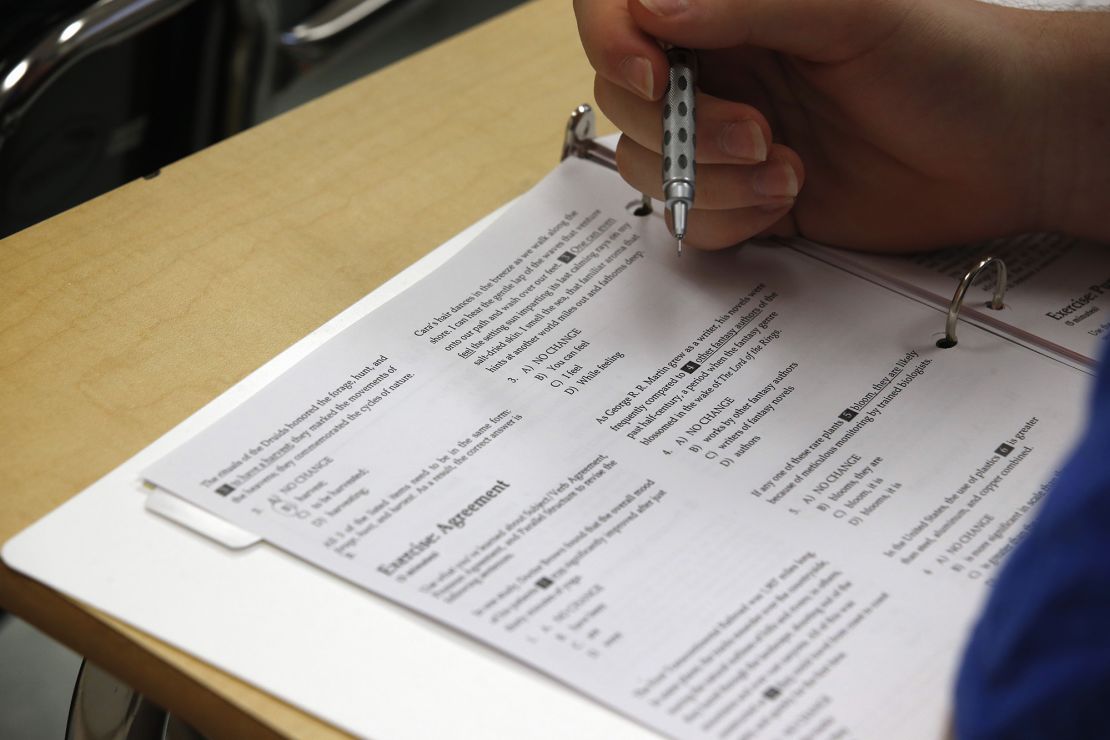
The College Board told CNN it has also done away with its esoteric vocabulary in the past decade.
“Starting in 2014, we said let’s measure all the most common things that are most useful in college and that students are more likely to encounter in their high school classrooms,” said College Board CEO David Coleman, noting this applies both to the math curriculum and the mastery of vocabulary.
In recent years, the College Board has implemented cost-saving initiatives for eligible test-takers to promote equity, such as waiving the $60 registration fee and offering college application fee waivers, which can save applicants as much as $90 per school. It has partnered with education non-profit Khan Academy since 2015 to provide free test prep materials.
The SAT School Day program, which launched in 2014, allows students to take the test on a weekday rather than on a designated weekend at a potentially unfamiliar testing center. The College Board say a majority of students use the program, which “has been shown to lead to higher college-going rates for low-income and rural students.”
Coleman says administering the test in a familiar environment can reduce the stress inherent to the SAT experience. He added that the shorter digital exam is also aimed at accommodating different types of test-takers.
“(The older version of the SAT) can feel like it’s designed for young people who are very quick, and it’s a great error to confuse quick and smart,” Coleman said. “The digital exam gives kids 160% more time per question … to make sure they can finish the exam without feeling out of breath.”
Read the full article here



